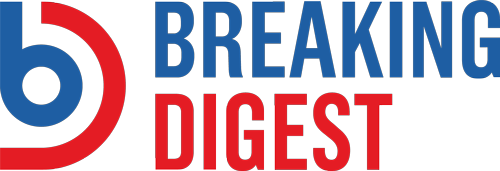
The Federal Deposit Insurance Corporation (FDIC) recently reported that 63 banks are on the verge of insolvency. This alarming disclosure highlights the fragility of several financial institutions amid economic uncertainties. The FDIC revealed a staggering $517 billion in unrealized losses within the US banking system, as first reported by The Daily Hodl. This figure, largely stemming from exposure to the residential real estate market, underscores the adverse effects of economic policies under the Biden regime.
BIDEN:
— Wall Street Silver (@WallStreetSilv) June 4, 2024
"Best Economy Ever Jack"
The FDIC, which insures deposits and monitors the health of banks, typically provides such lists to signal potential risks in the banking sector. The report has raised concerns among consumers and investors about the stability of these banks and the broader financial system. The FDIC is likely to increase its oversight and potentially intervene to prevent further financial instability.
The FDIC’s Quarterly Banking Profile paints a bleak picture of the nation’s financial institutions, now burdened with over half a trillion dollars in paper losses. While banks can hold securities until maturity without marking them to market on their balance sheets, these unrealized losses become a significant liability when liquidity is needed.
This report raises serious concerns about the stability of the banking sector and calls into question the effectiveness of current economic strategies. As these banks teeter on the brink of insolvency, the broader implications for the US economy remain uncertain, prompting calls for immediate policy reassessment and intervention.
According to Investopedia, “an unrealized loss is a “paper” loss that results from holding an asset that has decreased in price, but not yet selling it and realizing the loss. An investor may prefer to let a loss go unrealized in the hope that the asset will eventually recover in price, thereby at least breaking even or posting a marginal profit. For tax purposes, a loss needs to be realized before it can be used to offset capital gains.”
🚨 Just in:
— Michael Burry Stock Tracker ♟ (@burrytracker) June 4, 2024
FDIC just reported that 63 banks are on the brink of insolvent collapse pic.twitter.com/NsOidVq3Cq
From The Daily Hodl (bolding added for emphasis):
Unrealized losses in the US banking system are once again on the rise, according to new numbers from the Federal Deposit Insurance Corporation (FDIC).
In its Quarterly Banking Profile report, the FDIC says banks are now saddled with more than half a trillion dollars in paper losses on their balance sheets, due largely to exposure to the residential real estate market.
Unrealized losses represent the difference between the price banks paid for securities and the current market value of those assets.
Although banks can hold securities until they mature without marking them to market on their balance sheets, unrealized losses can become an extreme liability when banks need liquidity.
“Unrealized losses on available-for-sale and held-to-maturity securities increased by $39 billion to $517 billion in the first quarter. Higher unrealized losses on residential mortgage-backed securities, resulting from higher mortgage rates in the first quarter, drove the overall increase. This is the ninth straight quarter of unusually high unrealized losses since the Federal Reserve began to raise interest rates in first quarter 2022.”
The FDIC also says that the number of lenders on its Problem Bank List rose last quarter. According to the agency, these banks are on the brink of insolvency due to financial, operational, or managerial weakness or a combination of such issues.
“The number of banks on the Problem Bank List, those with a CAMELS composite rating of ‘4’ or ‘5’ increased from 52 in fourth quarter 2023 to 63 in first quarter 2024. The number of problem banks represented 1.4% of total banks, which was within the normal range for non-crisis periods of 1% to 2% of all banks. Total assets held by problem banks increased $15.8 billion to $82.1 billion during the quarter.”
While the FDIC says that the health of the US banking system is at no imminent risk, it warns that persistent inflation, volatile market rates and geopolitical concerns continue to put pressure on the industry.
“These issues could cause credit quality, earnings, and liquidity challenges for the industry. In addition, deterioration in certain loan portfolios, particularly office properties and credit card loans, continues to warrant monitoring. These issues, together with funding and margin pressures, will remain matters of ongoing supervisory attention by the FDIC.”
The “Problem Bank” classification highlights banks nearing collapse due to severe financial, operational, or managerial issues. The total assets held by these troubled institutions have surged by $15.8 billion to $82.1 billion.
The Biden administration’s economic policy failures are increasingly evident, with growing unrealized losses in the banking system and more lenders on the brink of insolvency. These developments underscore the risks posed by current mismanagement, leading the nation down a precarious path.



